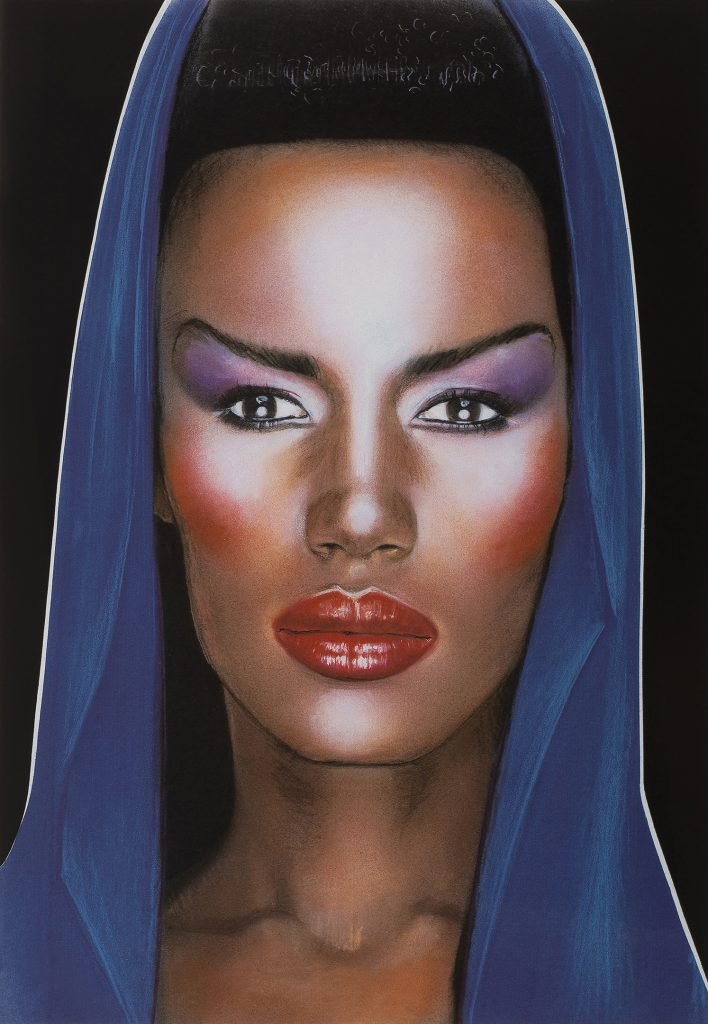Andy Warhol once famously said: “Richard Bernstein is my favourite artist. He makes everyone look so famous.” It’s safe to say that Richard Bernstein and Andy Warhol’s names are inextricably linked. Bernstein is known for his iconic Interview Magazine portraits, which many assumed were done by Warhol. However, little do people know that Bernstein was a pioneer when it comes to computer-generated graphics.

Credit: The Richard Bernstein Estate/Bobby Grossman
In an exclusive interview with Rory Trifon, the nephew and President of the Estate of Richard Bernstein, we uncover how important Richard Bernstein was for the digital art revolution. Above all, we explore how his work set the foundation for NFTs.
A digital art pioneer
Richard Bernstein and Andy Warhol met in 1965, at Bernstein’s one-man exhibition in New York. The two artists immediately hit it off and established themselves as pop art and digital art pioneers. When computers came around, Bernstein was one of the first people to embrace them.
In fact, Bernstein was one of the first artists to use a standalone computer – known as the Quantel paintbox – to create a portrait of David Bowie in 1983. Later on, he used the Quantel paintbox to create album covers for Grace Jones. In 1992, he made history by being one of the first artists to exhibit his computer-generated artworks to the public.

Credit: The Richard Bernstein Estate
Rory Trifon on Richard Bernstein
Bernstein passed on his love of art, especially digital art, to his nephew Rory (Trifon). As a result, Rory was motivated to find a medium that would immortalize his uncle’s work and create a lasting legacy. That medium turned out to be NFTs.
“So Richard, as I said, he was my uncle. And I was always surrounded by his art. He was really an uncle first, who happened to be an artist versus an artist who was my uncle,” said Rory. “As I got older, I really started to appreciate his art and his contribution to pop art. I thought about his legacy a lot, and how during his lifetime, he was well known but not quite a household name.”

Credit: The Richard Bernstein Estate
After seeing how the art world embraced NFTs, Rory decided to create the first Richard Bernstein NFT collection. “With Richard being a pioneer of digital artwork, I really feel like he’s a bridge between your traditional fine art world and the digital world. I feel like Richard would really embrace this completely. I think this is a great opportunity for me to introduce and reintroduce Richard’s art to more people,” explained Rory.
He continued, “I’ve never seen a community like this [referring to the NFT community] and embrace each other and want to build each other up. And, you know, I really feel like that was what Richard and Andy had in the 70s. And this is this new revolution.”
The Richard Bernstein NFT collection
The collection, which drops on February 3rd, comprises Grace Jones’ 1984 Interview cover as an edition of 50; Bernstein’s 1973 Warhol wallpaper as an edition of 10; as well as a one-of-one of Richard’s computer-generated artwork Andy Warhol with Red Paint.
In addition to owning a spectacular piece of art, Grace Jones NFT holders will receive a ticket to a VIP event in New York. Warhol Wallpaper NFT owners will receive an entry to the VIP event and a copy of Bernstein’s out-of-print 1984 book Megastar. In addition to these two perks, the NFT holder of the one-of-one will also receive a framed print of Andy Warhol with Red Paint.

Credit: The Richard Bernstein Estate
Rory Trifon on NFTs
Rory knows a thing or two about how the traditional art world operates. Having grown up under his uncle’s tutelage, does Rory see a difference between the traditional art world and the NFT art space?
“I’ve seen a lot of traditional artists starting to move into the NFT space, like Damian Hirst…David Salle is another artist, who came from a traditional art space. I think a lot of artists are looking at NFTs, and they see this as the future. I don’t see a difference really, between them,” commented Rory.
He continued, “Those people that are doing it, like Damien, and David, they’re innovators; and they want to be at the forefront of this new technology in this new era. So, you know, I don’t see that being any different than Richard experimenting with the silver screen with Andy or doing the computer-generated work in the 80s.”
Rory Trifon’s words cannot be truer, especially after annual contemporary art sales hit a record $2.7 billion last year thanks to NFTs. Thanks to Richard Bernstein’s work, contemporary artists can use technology as an artistic tool, and a way to leverage their careers.
All investment/financial opinions expressed by NFTevening.com are not recommendations.
This article is educational material.
As always, make your own research prior to making any kind of investment.








